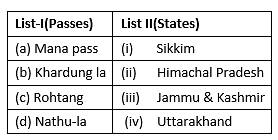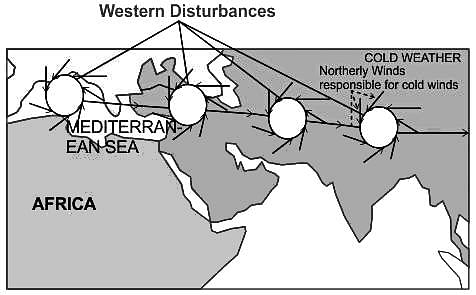TS SET Paper 2 Mock Test - 9 (Geography) - TS TET MCQ
30 Questions MCQ Test TS SET Mock Test Series 2024 - TS SET Paper 2 Mock Test - 9 (Geography)
Consider the following statements:
1. Bhabar is a narrow belt that runs in the East-West direction along the foot of the Himalayas from river Indus to Jhelum.
2. The Bhabar plains are not suitable for the cultivation of crops.
Which of the following is/are correct?
Whose essay is “Exploring new ethics for survival”
| 1 Crore+ students have signed up on EduRev. Have you? Download the App |
Which of the following is the chief characteristic of ‘mix farming’ ?
Given below are two statements. One is labelled as Assertion (A) and the other is labelled as Reason (R).
Assertion (A): Foreign Direct Investment is not beneficial for economic growth.
Reason (R) : Foreign Direct Investment increases trade in the economy.
Select the correct answer from options given below:
Which of the following Railway zones and their Headquarters is not correct?
Consider the following statements .
(A) Rock is an aggregate of one or more minerals with definite composition of consituent minerals.
(B) Minerals are created by natural process without any human interference.
Choose the correct option.
i. Light and temperature are direct ecological factors.
ii. Indirect factors include soil structure, altitude, wind and slope.
iii. Edaphic factors and biotic factors can be included in physical factors.
Choose the correct option from below:
Consider the following:
1. Proximity of the jute-producing areas
2. Inexpensive water transport
3. Availability of economical labor
4. Abundant water for processing raw jute
How many of the above are responsible factors for the location of the Jute industry in the Hugli basin?
How many of the statements given above are correct?
During the cold weather season, in the northern plains, there will be an inflow of cyclonic disturbances from the ______ directions.
Which of the following is/are example(s) of the assertion that cultural differences existing in the world is the outcome of human interaction with the environment?
(A) People of Amazon basin live in houses with a steeply slanting roof.
(B) People of Amazon practice 'slash and burn agriculture'.
(C) People in Bihar and Assam make handicrafts from silk.
In manufacturing industries of India, a micro enterprise is an enterprise where investment in plant and machinery does not exceed ____?
Tumkur, where Geological Survey of India has found indications of Gold Reserves, is located in which among the following states?
Read the following statements and state which of them are true?
Spykman's Rimland Theory was a variant of Mackinder's Heartland Model. Both the models emphasised on
Assertion (A) : In the concentric zone model the rich high-class citizens live in the fourth zone.
Reason (R) : Detached homes are found in the fourth zone which is at quite a bit of distance from the Central Business District.
Code :
 for delineating crop combination regions?
for delineating crop combination regions?
When was National environment planning and coordination (NEPC) established?
Identify the theories/hypotheses that have been put forward to explain the causes of mountain building.
(A) Nebular Hypothesis
(B) Progressive Wave Theory
(C) Contraction Hypothesis
(D) Plate Tectonics Theory
Choose the most appropriate answer from the options given below:_______ are lines drawn on a map to locate, in the plan view, points of equal ground elevation.
At what plate boundary setting is the ocean floor deepest?
What is the shallow submerged extension of a continent called?
Match List-I with List-II :

Select the correct answer from the options given below:
|
60 tests
|



















